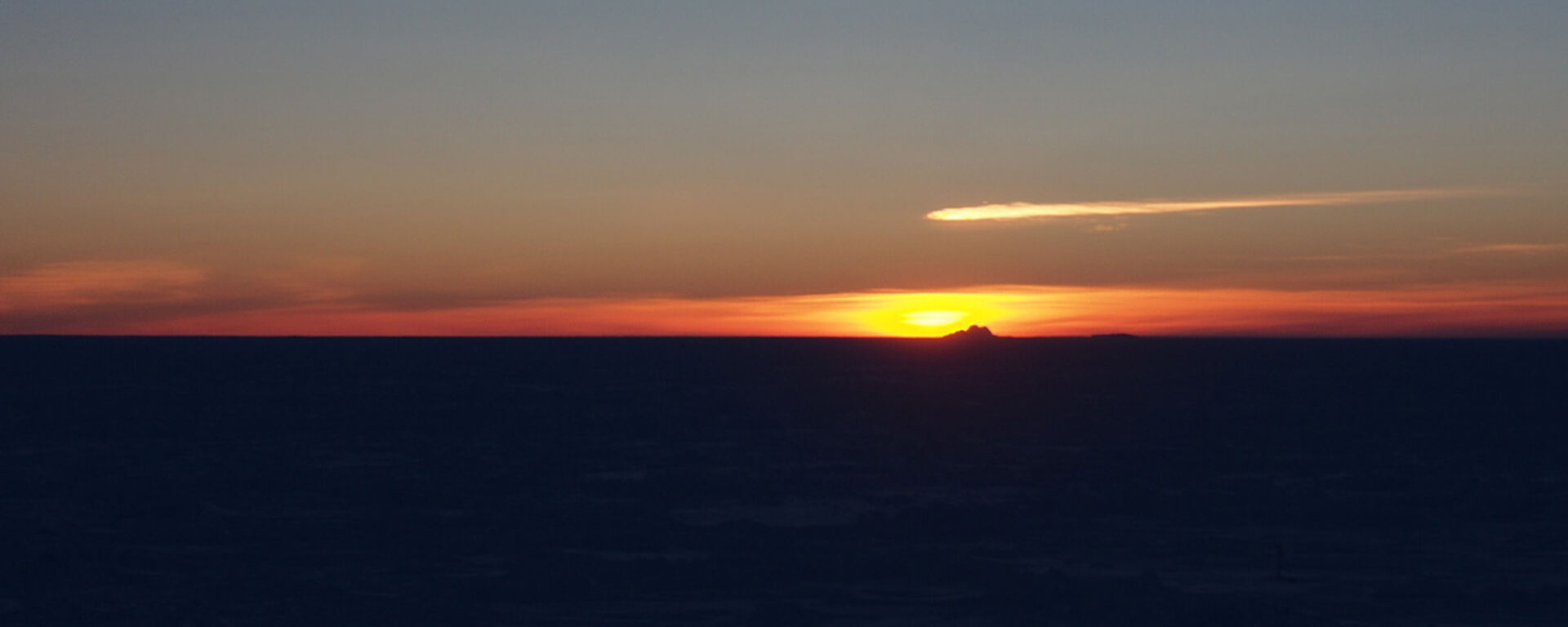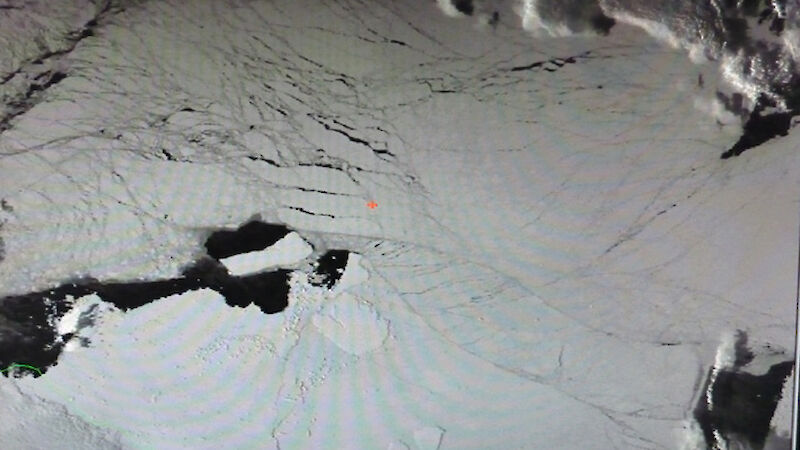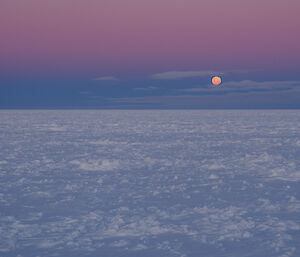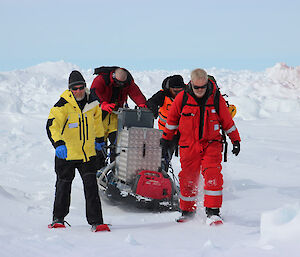Wednesday 31 October
The Aurora Australis is currently surrounded by thick, rubble-like ice, which is making progress difficult and will delay our return to Hobart. But the good news is scientists are making the most of the opportunity to conduct multi-day research in the one spot.
I did a brief ice recce yesterday with the team operating the Remotely Operated Vehicle (ROV), which is being used to measure the amount and distribution of sea ice algae under the ice. The team were looking for a suitable patch of ice in which to dig a hole to deploy the vehicle and as we dug into the ice with a spade a few juvenile krill popped out of the slush. We radioed the krill team to come and have a look.
The krill team includes Australian and German scientists from the Australian Antarctic Division, the Institute of Marine and Antarctic Studies (University of Tasmania) and the Alfred Wegener Institute for Polar and Marine Research in Germany. The team want to learn more about how the early life stages of krill (larvae and juveniles) survive the winter, by studying their metabolism, growth rate and diet, and the sea ice habitat they live in. Krill have 11 larval stages before they become juveniles and then sexually mature adults. At this time of year (spring), larval and juvenile krill depend on the algae incorporated into the sea ice for survival and can be found living close to the ice, in pockets formed by rafted sea ice and protected from strong ocean currents. As a result of our krill discovery, the team caught some live juvenile krill, using a small pump to suck the animals from directly beneath the ice.
As well as research we have had the chance to enjoy and photograph some spectacular sunsets and moon rises over the sea ice. There is a particularly large iceberg on the horizon which is proving to be a good photographic subject. On the most recent satellite image of our position (see photo) I was amazed to discover that this iceberg is actually part of B09B which calved from the Ross Ice Shelf in 1987. It subsequently collided with and broke off the tip of the Mertz Glacier tongue in February 2010. In the attached photo the ship’s position is indicated by the red cross. B09B is the rectangular iceberg to the left (30km long x 16km wide), surrounded by open water, and the Mertz Glacier tongue tip (known as C28) is the large, tooth-shaped berg south of the ship (34km long x 28km wide).





